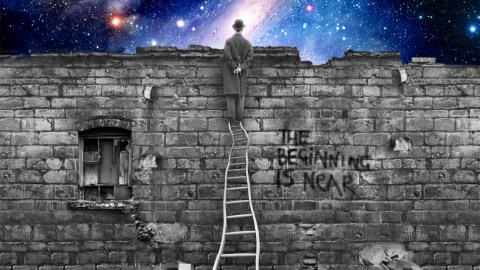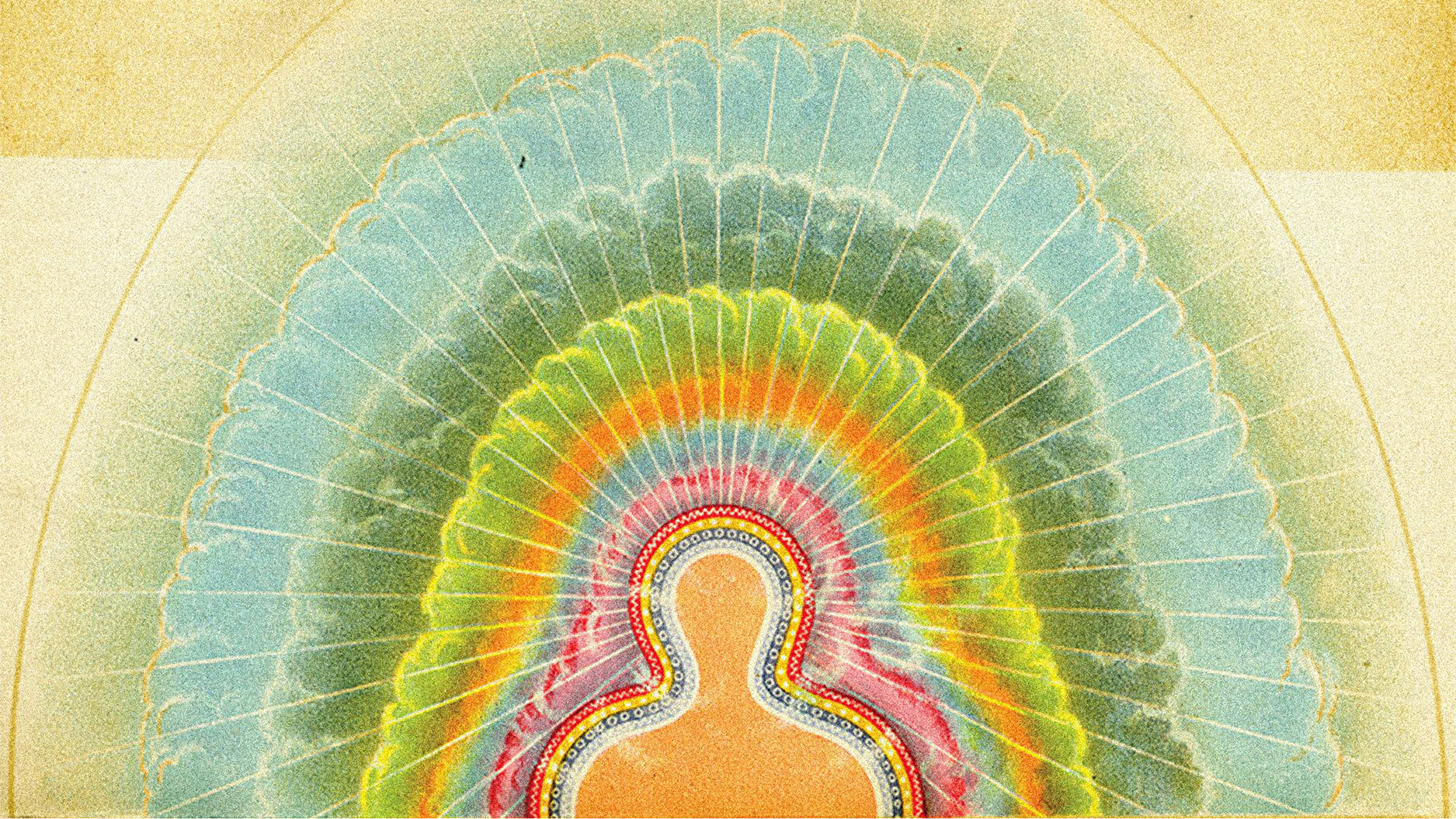The Creating and Sharing of AWE

BY JASON SILVA
“We are enraptured prose-beings raised to the highest power”. – Walter Benjamin, On Hashish
Timothy Leary and Buckminster Fuller called themselves “performing philosophers”, using the power of media communication to spread galactic-sized ideas about the state of the species in relation to the wider universe. Timothy Leary used to say, “In the information age, you don’t teach philosophy as they did after feudalism. You perform it. If Aristotle were alive today, he’d have a talk show”. Carl Sagan is another example of the philosopher-as-media-personality, effectively hacking pop culture with his iconic Cosmos TV series and sending our collective minds reeling.
This notion of the ‘performing philosopher’ is very appealing. There is a freshness and spontaneity to this art form, with its free-associative ruminations and ecstatic diatribes chasing aliveness, wonder and AWE wherever they may be.
Awe is everywhere, we just don’t always perceive it: the brilliant Alain De Botton reminds us how much we don’t realize this when describing a typical airplane flight:
“There is not much talk about the clouds visible up here. No one thinks it remarkable that somewhere above an ocean we flew past a vast white candy-floss island which would have made a perfect seat for an angel or even God himself in a painting by Piero della Francesca. In the cabin, no one stands up to announce with requisite emphasis that, out of the window, WE ARE FLYING OVER A CLOUD, a matter than would have detained Leonardo and Poussin, Claude and Constable.”
There is catharsis in the act of philosophizing-out-loud, a visceral joy in the endless strings of improvisational wordplay bursting forth in acts of emotive rapture— The camera or voice recorder perhaps the best tool to somehow ‘immortalize’ this download.
Today we need philosophy with the same existential urgency that we always have–and to effectively connect with eager audiences, I believe philosophical ideas will benefit from being “packaged” in the most compulsively watchable and infectiously shareable forms of our time.
In fact, I would update what Leary said, I’d say if Aristotle were alive today, he’d be a digital nomad, spitting heady dialogue into his flip cam or iPhone, and sharing it on YouTube, all while globetrotting the world to feed his wanderlust.
BITE-SIZED INSPIRATION:
Taking advantage of the proliferation of short form media, I’m working to put out bite-sized bursts of inspired thinking meant to “epiphanize” (or at the very least engage and inspire). It’s my modest contribution honoring these performing philosophers and their craft.
I’m interested in the audio/visual mashup as the re-organization of media bits to reveal something new.
A work of art evokes transcendence when its constituents, in dizzying congruence, somehow reveal something new and greater than the sum of their parts. This is crucial. Each part has intrinsic value of course, (and it too is a mashup of even smaller entities), but I suppose I’m most interested in the ethereal nature of what can emerge when different pieces coalesce together and birth a new, larger, all-encompassing-dot-connecting pattern/paradigm/vision/entity. For me it’s about the bigger picture, its about the Whole.
As a filmmaker and techno-junkie, I like the instruments of image and sound; they offer a palette through which I can sing. In other words, the clearest synthesis of my vision is a cacophony of enraptured wordspeak simultaneously visualized using transcalar imagery.
My collaborator in the embedded video and media artist Marija Coneva and her team at NotThisBody, operate through mind mutuality and reciprocal enhancement. They are about fluid affinity rather than fixed identity, and do not recognize boundaries between mediums. They “create, mash-up, weave, map, compute and curate open-ended narratives about the evolution of consciousness through technology”. She defined our creative work like this:
“Creation besides being the opposite of annihilation, is the constant state of readjustment, repurposing and in that way curating – whether that be particles of thought, or feelings reflected in the bits of virtual representations. So we are just recontextualizing to reveal some patterns and point out to what is less obvious when we are glaring at the pieces from close and in their silo.”
Again, I’m interested in mechanisms that assist in revealing patterns. My friend and author Sebastien Marincolo explains how the techniques used in the film Koyaanisqatsi served a key function in expanding our awareness:
“The groundbreaking film utilized time lapse to reveal the repetitive and recurring patterns of daily life… You see for instance a bird’s eye view of a long street in Manhattan with cars going through synchronized traffic lights. What we see is a dance to some mechanized rhythm. We come to understand we are all dancing to this and other rhythms without noticing it anymore.”
He follows this explanation with perhaps the most important statement of all: “These patterns are omnipresent, but only when we see these patterns in a more compressed mode of presentation to we start to attend to them as such.”
For this reason, the tools of editing and the juxtaposition of images, sounds and scales can serve aslenses through which we may discover a pattern we’d otherwise have missed, perhaps what Johnson calls “an underlying, comprehensive mythology that makes sense of the polyglot babble.”
This is pertinent today as we face radical transformation and exponential technological progress. Information technologies have become instruments of mind expansion and now more than ever, we need to philosophize— to imaginatively interpret the implications— of our co-evolution with technology. We need new ways of digesting these ideas. We must write the script for the next chapter of the Homo Sapien Story as we transition to what Leary called Homo-Universalis and Homo-Cyberneticus.
AHA! – A MASH-UP OF ART, SCIENCE, WONDER:
When we grasp how words and concepts map our realities, and we see the recurring patterns across different scales of reality, we glimpse a visceral understanding of the infinite. We become Walter Benjamin’s enraptured prose-beings. We experience synesthetic ecstasy. It is what Rich Doyle calls “pilates for the head”–pure, intoxicating, irresistible aesthetic arrest.
Werner Herzog has lucidly described this feeling as “ecstatic truth”— a deeper, interconnecting, transcalar, grasp of something, of everything. He has mocked mere factual truth by saying if facts were that interesting then the phonebook would be the world’s most interesting book.
Astronomer Rebecca Elson wrote in her book A Responsibility to Awe, that “Facts are only as interesting as the possibilities they open up to the imagination” — our imagination is the thread that stitches the NARRATIVE.
Pulitzer Prize winner Norman Mailer credits marijuana for expanding is perceptions: “what I find is that pot puts things together. Pot is marvelous for getting new connections in the brain. It’s divine for that. You think associatively on pot, so you can have real extraordinary thoughts.”
The Imaginary Foundation credits the power of aesthetics: “Great art expands the way we see—it uplifts the human spirit from the barbaric and thrusts it toward the numinous.”
Philosopher and writer Alain DeBotton wrote that the artist is “willing to sacrifice a naive realism in order to achieve realism of a deeper sort, like a poet who, though less factual than a journalist in describing an event, may nevertheless reveal truths about it that find no place in the other’s literal grid.”
Terence McKenna used to say, “Find the Others”, and so in experimenting with new forms of idea transmission, we’re learning through sharing the delight of being inspired and wired.
SYNAPSES STANDING ON END:
When we connect the dots and a new gestalt is grasped for the first time we experience the ecstasy of REVELATION. Cosmologist Brian Swimme wrote this beautiful passage to describe this feeling when staring at the stars:
“As you lie there feeling yourself hovering within this gravitational bond while peering down at the billions of stars drifting in the infinite chasm of space, you will have entered an experience of the universe that is not just human and not just biological. You will have entered a relationship from a galactic perspective, becoming for a moment a part of the Milky Way galaxy, experiencing what it is like to be the Milky Way galaxy.”
Jason Silva is a media personality and Fellow at the Hybrid Reality Institute.





